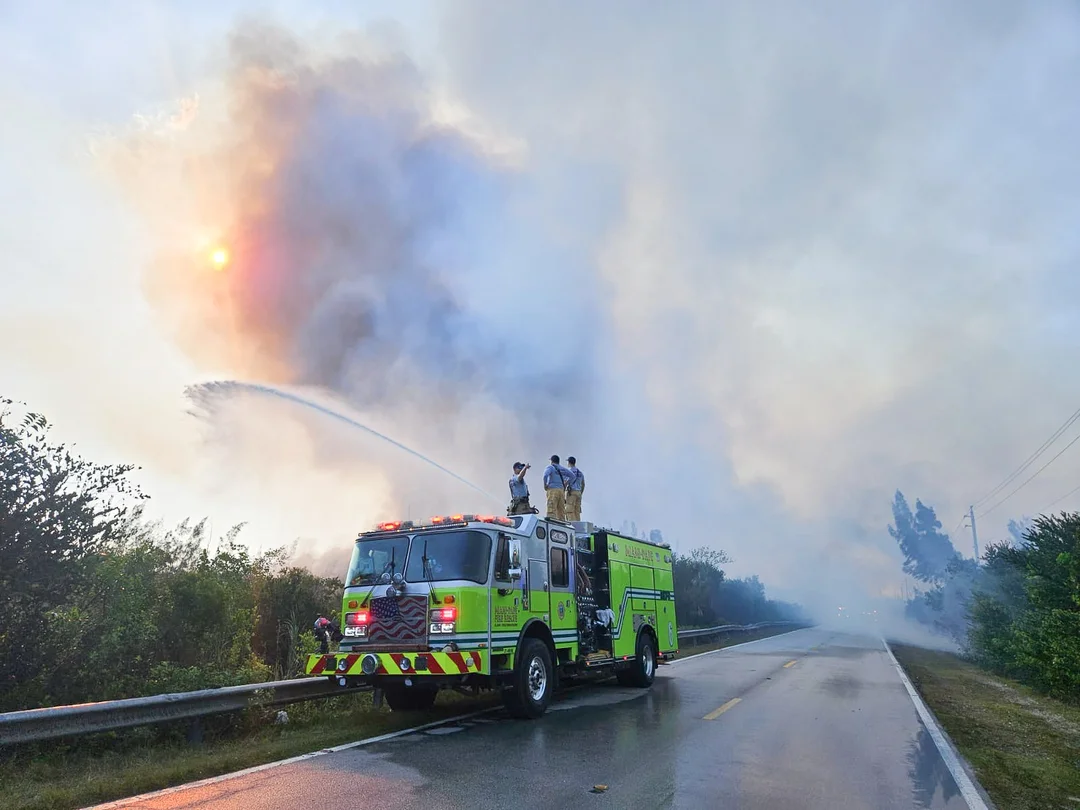
Is Florida’s Tropical Escape Under Threat from Raging Flames?
In the sun-soaked landscapes of South Florida, a fierce wildfire has erupted, disrupting daily life and raising alarms about the vulnerability of one of America's most iconic getaways. Starting as a modest blaze, this fire has grown rapidly, forcing road closures and stranding travelers between the Florida Keys and the mainland. With dry conditions exacerbating the risk, this event highlights the growing challenges posed by climate-related disasters in the region.
The wildfire, which ignited near Card Sound Road in Miami-Dade County on Thursday, May 8, quickly escalated from a mere 6 acres to nearly 400 acres by Friday afternoon. Miami-Dade Fire Rescue and the Florida Forest Service mobilized ground and aerial teams to combat the flames, achieving partial containment by Friday evening. Authorities reported the fire as 25% contained initially, rising to 50% by nightfall, according to updates from the Florida Forest Service. This rapid spread underscores the precarious environmental conditions, with the area experiencing prolonged dry spells and little rainfall, making vegetation highly flammable.
Travelers faced significant disruptions as southbound lanes of Card Sound Road were shut down due to flare-ups, while northbound routes and the 18-Mile Stretch saw intermittent closures. Fire crews prioritized safety, halting traffic for water drops from helicopters, which added to the chaos. One driver shared their frustration: "They closed the road when we were like five cars away from passing. So we were like, wow, you know. We stopped to eat... and that was a mistake. We should've continued and we would've made it." This echoes the experiences from an earlier blaze in March, which scorched over 26,000 acres and left similar scars on the community, reminding residents that such events are becoming all too common.

Local officials, including the Florida Highway Patrol, urged motorists to avoid the area unless absolutely necessary, emphasizing the dangers of smoky conditions and potential delays. Schools in the Upper Keys remained open but canceled bus services, leaving parents to arrange alternative pickups. This incident not only highlights the immediate risks to infrastructure and safety but also prompts broader questions about preparedness in the face of increasing wildfires. Compared to the March event, which took weeks to control, the current response shows improvements in coordination, yet it reveals ongoing vulnerabilities in Florida's environmental management amid climate change.
As crews work tirelessly to fully contain the blaze, the situation serves as a stark reminder of how quickly natural beauty can turn hazardous. For those living in or visiting the Florida Keys, this wildfire isn't just a traffic nuisance—it's a wake-up call to the escalating threats from extreme weather patterns.

In summary, this wildfire's impact extends beyond charred landscapes, affecting communities and economies reliant on seamless travel. What does this mean for Florida's future in an era of intensifying natural disasters? We invite readers to share their thoughts—have you been affected by such events? Leave a comment below and help us spark a conversation on building resilience.